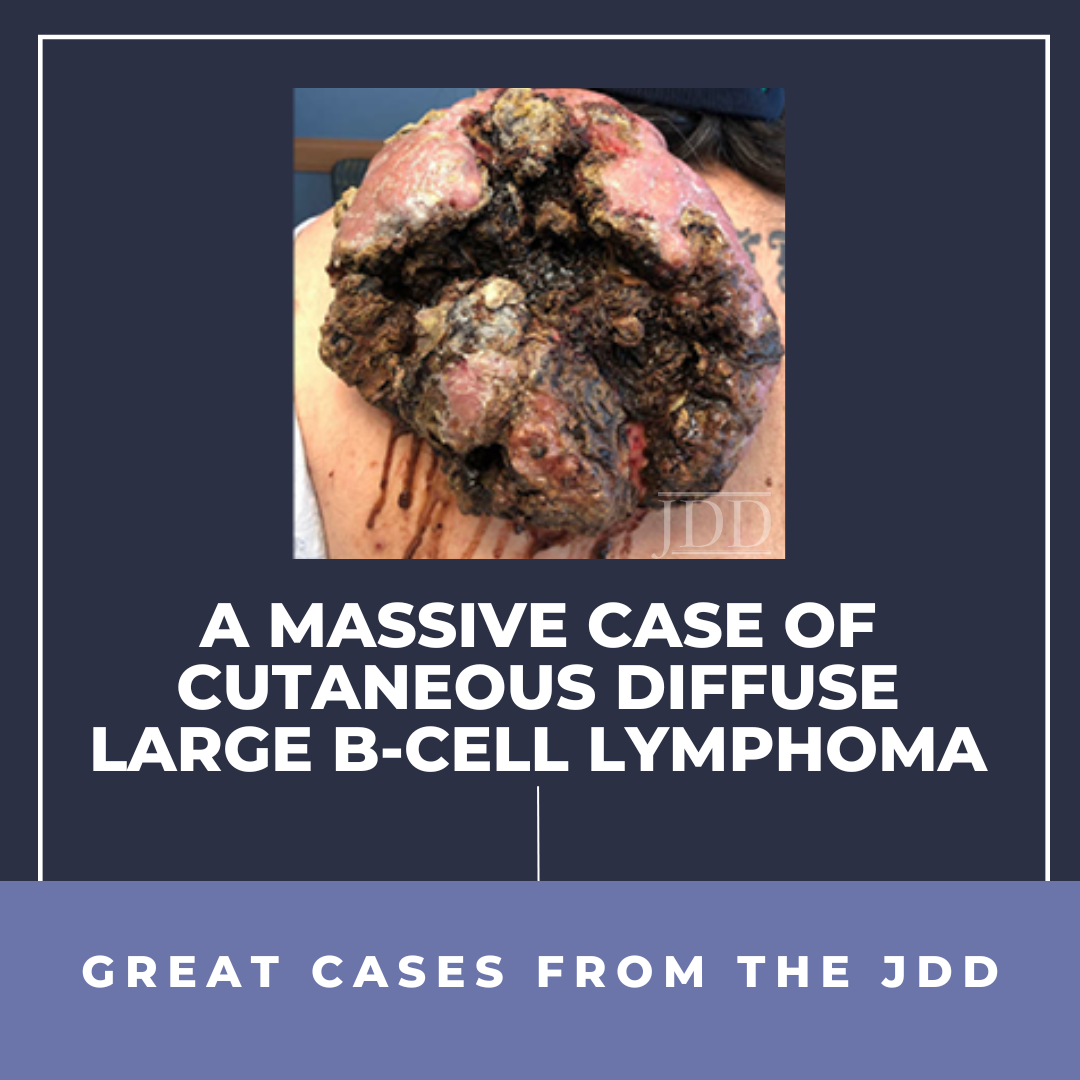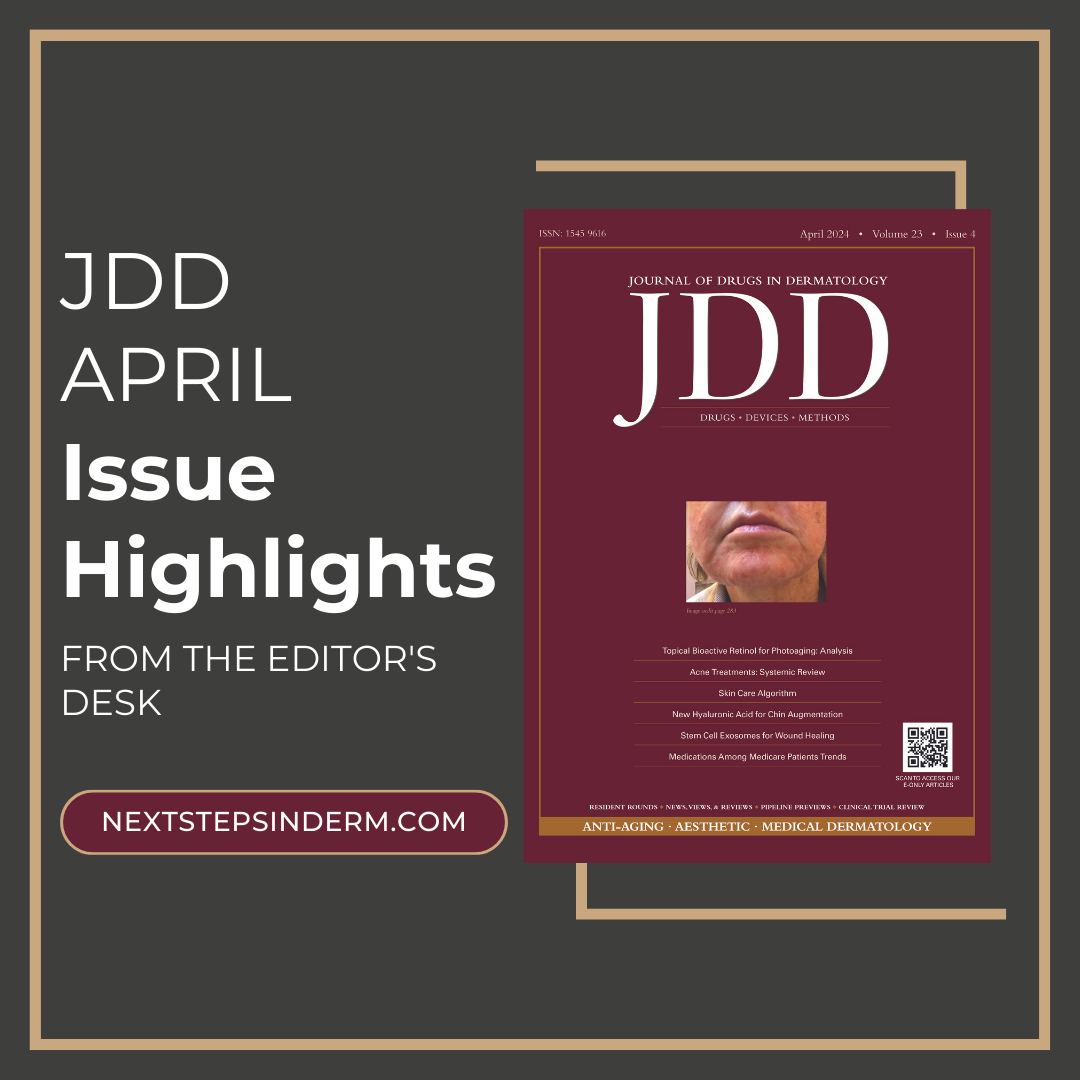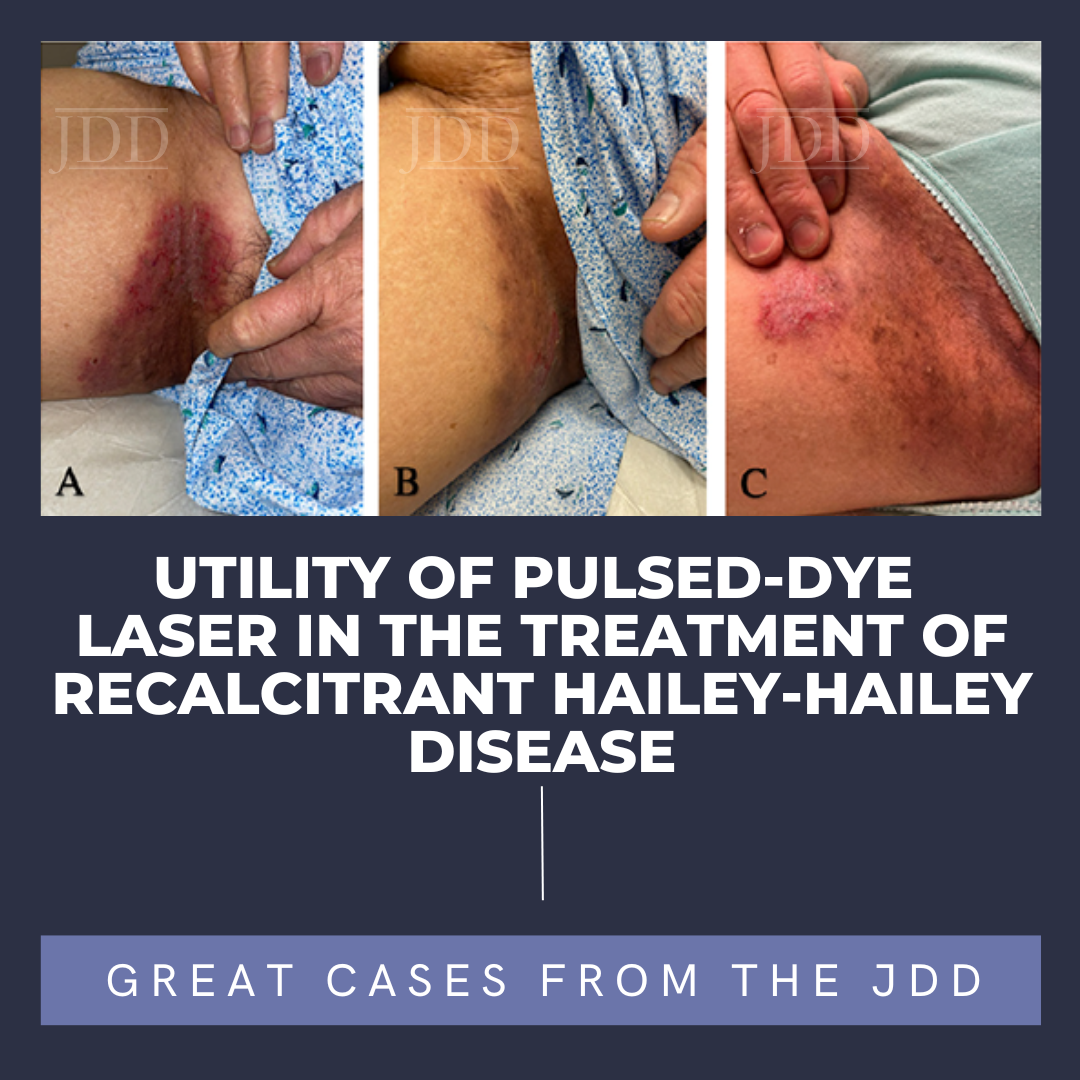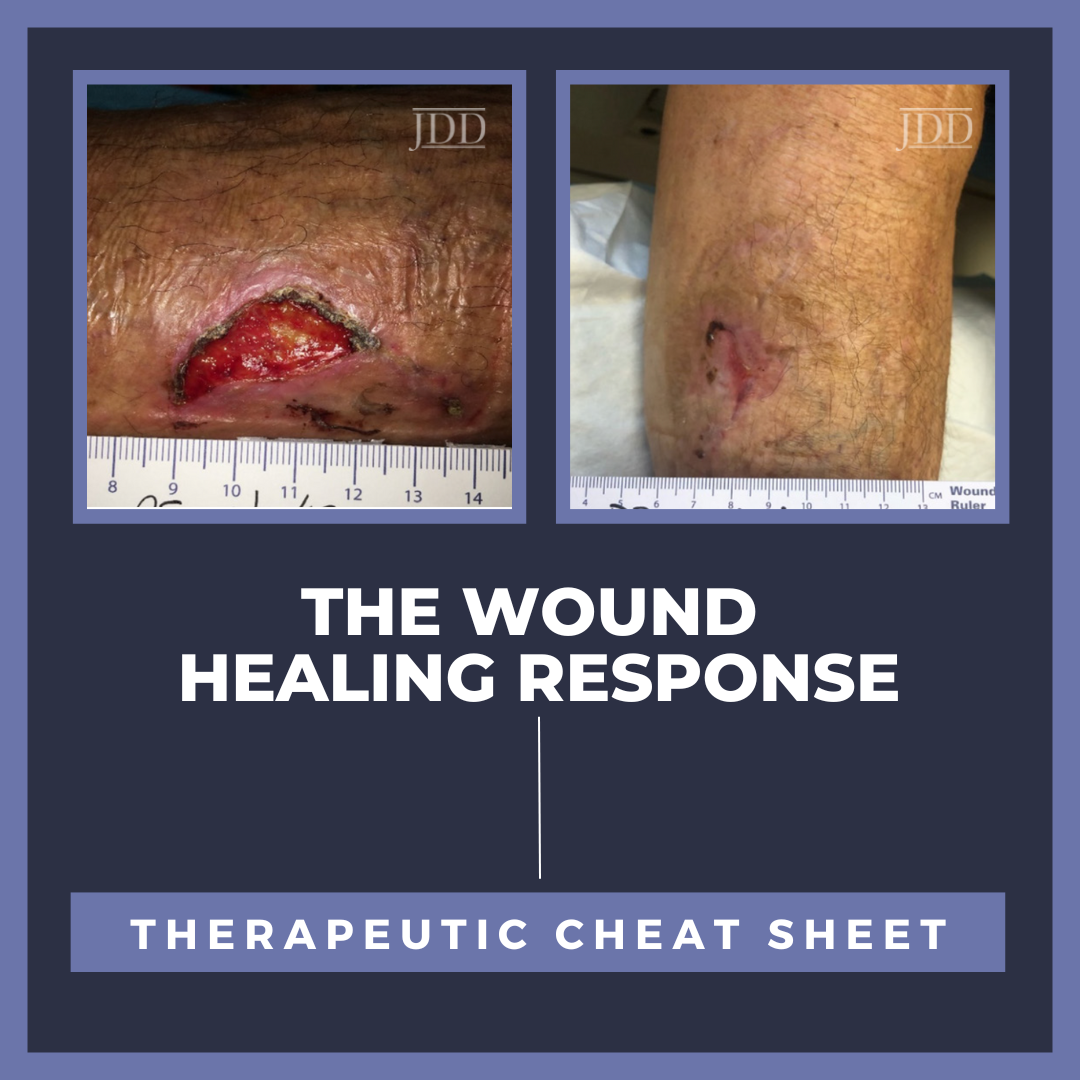A Massive Case of Cutaneous Diffuse Large B-Cell Lymphoma
 ABSTRACT
Diffuse large B-cell lymphoma (DLBCL) is the most common type of non-Hodgkin lymphoma, and extranodal involvement is seen in approximately 40% of cases. However, cases involving the skin and muscle are rare, and skin manifestations most commonly present as plaques, papules, small nodules, or ulcers. In this report, JDD authors Lauren E. Merz MD MSc, Christopher B. Hergott MD PhD, and Reb …
ABSTRACT
Diffuse large B-cell lymphoma (DLBCL) is the most common type of non-Hodgkin lymphoma, and extranodal involvement is seen in approximately 40% of cases. However, cases involving the skin and muscle are rare, and skin manifestations most commonly present as plaques, papules, small nodules, or ulcers. In this report, JDD authors Lauren E. Merz MD MSc, Christopher B. Hergott MD PhD, and Reb …
 ABSTRACT
Diffuse large B-cell lymphoma (DLBCL) is the most common type of non-Hodgkin lymphoma, and extranodal involvement is seen in approximately 40% of cases. However, cases involving the skin and muscle are rare, and skin manifestations most commonly present as plaques, papules, small nodules, or ulcers. In this report, JDD authors Lauren E. Merz MD MSc, Christopher B. Hergott MD PhD, and Reb …
ABSTRACT
Diffuse large B-cell lymphoma (DLBCL) is the most common type of non-Hodgkin lymphoma, and extranodal involvement is seen in approximately 40% of cases. However, cases involving the skin and muscle are rare, and skin manifestations most commonly present as plaques, papules, small nodules, or ulcers. In this report, JDD authors Lauren E. Merz MD MSc, Christopher B. Hergott MD PhD, and Reb … Continue reading "A Massive Case of Cutaneous Diffuse Large B-Cell Lymphoma"


 Introducing the April 2024 Editorial Highlights from the Journal of Drugs in Dermatology! This month's issue is packed with groundbreaking research and insights into dermatologic treatments and practices. From original articles exploring innovative therapies for conditions like photoaging and acne vulgaris to case reports shedding light on rare dermatologic phenomena, this issue offers a comprehen …
Introducing the April 2024 Editorial Highlights from the Journal of Drugs in Dermatology! This month's issue is packed with groundbreaking research and insights into dermatologic treatments and practices. From original articles exploring innovative therapies for conditions like photoaging and acne vulgaris to case reports shedding light on rare dermatologic phenomena, this issue offers a comprehen …  INTRODUCTION
Benign Familial Pemphigus, or Hailey-Hailey Disease (HHD), affects intertriginous areas of the skin causing epidermal blistering and vesicles that coalesce into weeping and crusting plaques.¹
The loss-of-function mutation of the ATP2C1 gene causes a disruption in calcium homeostasis of keratinocytes. The resulting dysfunction in desmosomes and cell-cell adhesion causes acanthol …
INTRODUCTION
Benign Familial Pemphigus, or Hailey-Hailey Disease (HHD), affects intertriginous areas of the skin causing epidermal blistering and vesicles that coalesce into weeping and crusting plaques.¹
The loss-of-function mutation of the ATP2C1 gene causes a disruption in calcium homeostasis of keratinocytes. The resulting dysfunction in desmosomes and cell-cell adhesion causes acanthol …  Welcome to the December 2023 issue of the Journal of Drugs in Dermatology (JDD), where cutting-edge research and advancements in the field of dermatology take center stage. This issue brings together a diverse array of original articles, case reports, brief communications, and letters to the editor and delves into the latest developments, therapeutic breakthroughs, and cl …
Welcome to the December 2023 issue of the Journal of Drugs in Dermatology (JDD), where cutting-edge research and advancements in the field of dermatology take center stage. This issue brings together a diverse array of original articles, case reports, brief communications, and letters to the editor and delves into the latest developments, therapeutic breakthroughs, and cl …  Following numerous office-based dermatologic procedures, erythema, swelling, and scarring are often feared complications experienced by our patients. Understanding the wound healing response is synonymous with understanding the stages of healing and ultimately the clinical appearance of each wound. Possessing and sharing a firm grasp on this knowledge allows for patient empowerment during the woun …
Following numerous office-based dermatologic procedures, erythema, swelling, and scarring are often feared complications experienced by our patients. Understanding the wound healing response is synonymous with understanding the stages of healing and ultimately the clinical appearance of each wound. Possessing and sharing a firm grasp on this knowledge allows for patient empowerment during the woun …